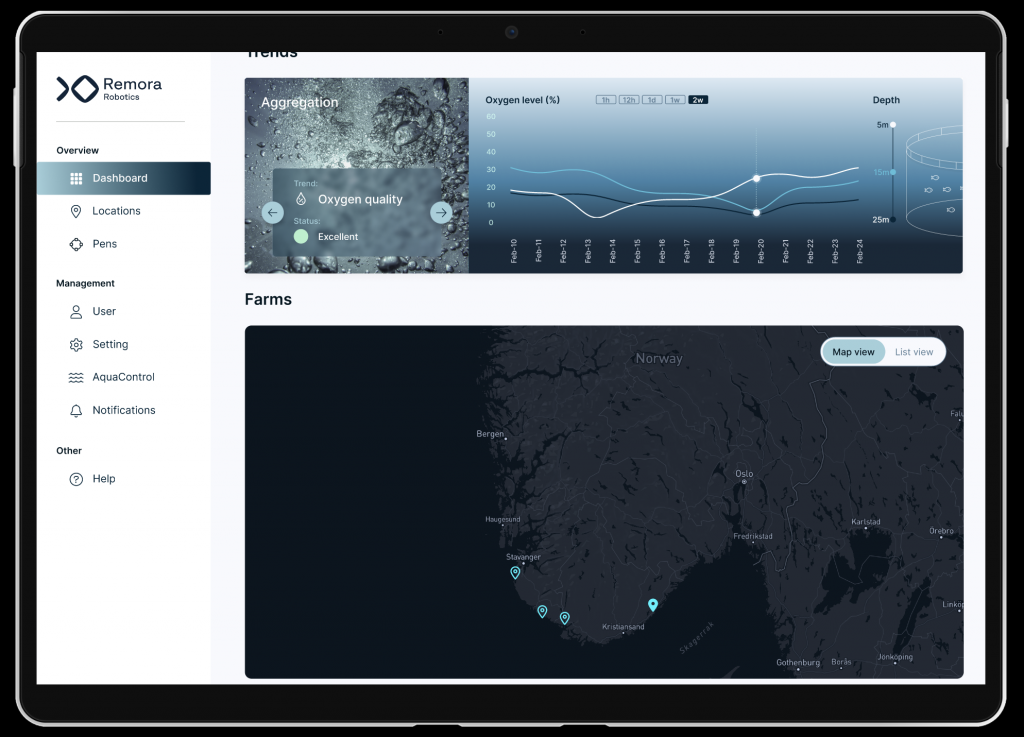SmplCo partners with tech incubators to bring entrepreneurs’ ideas to life, delivering a higher return on investment and getting results faster than ever before.
Here’s one example of how we’re doing that in the beautiful city of Trondheim, Norway’s tech hub.
The Incubator
Proneo is one of Norway’s leading incubators, fostering innovation and sustainable growth in both existing businesses and start-ups.
The incubator has supported thousands of start-ups since it was founded 15 years ago.

The Challenge
Our goal is to:
- give Proneo’s start-up clients the strongest possible chance of success in their early stages
- give Proneo a higher return on its investment in start-ups
- boost the incubator’s enviable reputation for innovation
To do this, SmplCo needs to help Proneo’s digital start-ups to:
- Rapidly define a version of their idea that is most likely to succeed
- Create tangible evidence of their value, to win over stakeholders (who range from investors to wider team members, beta customers, and more)
- Save time and money by promoting a ‘fail fast or succeed quickly’ approach
To deliver doing this, we aim to remove many of the barriers that plague start-ups in early stages of development. Our partnership with Proneo is designed to:
- Cut out lots of meetings and discussion time
- Remove confusion, misunderstandings and misinterpretation
- Enable start-ups to quickly get market insight, then adapt their ideas accordingly
- Cut the number of iterations an idea needs before it is proved or disproved

How’s it going?
SmplCo’s advisors have all walked in the shoes of Proneo’s start-ups, having built and sold our own companies (including a $3bn tech unicorn).
We know how to find where the true value of ideas lie – something the team at Proneo quickly recognised.
‘Getting ideas out of entrepreneurs’ heads can be really painful,’ says Jørn Engvik, an advisor to Proneo whose own start-up, Hoopit, will soon reach one million members.
‘But SmplCo doesn’t just do that; you help the start-ups find what’s most important and where they should focus, then help them define their vision and decide how bold they should be.’
What you guys are doing is brilliant
Jørn Engvik, Proneo advisor and renowned entrepreneur
Jørn smiles as he recounts the story of a (top secret!) AI education service we worked on together at Proneo.
‘When you presented your prototype, I thought [the start-up client] might start crying!’ he says. ‘They had this idea in their head for years and you really caught the essence and value of that idea. It was amazing to see.’
Jon-Ivar Holmslet, Project Leader at Proneo, said our approach – which focused around our 5-Day Prototype service – had an immediate impact on that start-up.
‘We were struggling to get someone on board with this idea; someone with a big network that we needed to tap into,’ he says.
‘Then I showed her the prototype you made, and the discussion totally changed. She saw the value immediately, and started listing who we should be talking to about it.’

The Deep Dive
What the big problem for incubators?
‘When you start working with start-ups you have to get over a big hurdle,’ says Proneo advisor Jørn Engvik. ‘That hurdle is how to get ideas out of an entrepreneur’s head and down onto paper, because that can be really painful.’
Often these ideas come spilling out in a confused way, with gaps in logic, process, who the audience is, what they need… and more!
Many promising start-ups fail at this stage because a simple lack of clarity around the founders’ vision means the value of a product can be easily lost.
This can be fatal to start-ups trying to trying to get stakeholders on board, whether for investment, user testing, or any other number of things.

‘With software, you often succeed because of who you get onboard, not because of the software itself,’ explains Proneo project leader Jon-Ivar. ‘To do that you have to be able to demonstrate what that value is and how you’re going to deliver it.’
‘The thing is, the people who have ideas for digital start-ups often find it difficult to explain them and demonstrate what they want to achieve,’ he adds.
‘At Proneo, we have all these models for value and delivery and stakeholders, but they don’t help the start-ups explain what the user experience will be like.’
It’s around this time many digital start-ups suffer death by PowerPoint, when their confused and confusing visions are presented to stakeholders.
And there’s another big problem that hits entrepreneurs hard at this stage.
‘Many companies haven’t even thought about how they’re going to deliver the product,’ says SmplCo’s General Manager, Andreas Melvær, who leads our Proneo partnership.
‘We’re talking about the flows and structures that are going to deliver the service, and which are the most important things – particularly if you want to prove to stakeholders your idea will succeed in the real world.’

How are Proneo and SmplCo fixing the problem?
It all comes down to expertise, both SmplCo’s and that of Proneo’s advisors.
Andreas from SmplCo explains our own approach is based on the deep experience within our consultancy.
‘Our advisors are all entrepreneurs themselves, who have built businesses,’ he says. ‘That means we’re very good at taking ideas, understanding where the value lies – even if the entrepreneur can’t explain that themselves – and then filling in the blanks.’

To bring that value to life in a meaningful way, our immediate focus is on the core user journey.
‘First you must ask “what will be the beating heart of my service?”‘ Andreas says.
The answer to that will be based on who you are creating the earliest version of your product or service for.
‘You will make something different if you’re creating something to woo investors, than you would if you were aiming to align teams, test with users, or something else,’ Andreas says.
This is when having the expertise to fill in the blanks becomes crucial.
Andreas says entrepreneurs tend to fall into one of two categories:
- The Techies: those with technical knowledge but not the domain knowledge (i.e. they have a good idea on delivery mechanisms, but little insight into the what the customer wants)
- The Subject Matter Experts: those who know what the customer needs, but has little or no idea how to deliver on that need
‘Once we’ve recognised where in that spectrum they lie,’ he says, ‘we can tailor our approach, starting with the most important user journey.’
Andeas and his team ask key questions like:
- who are the users?
- what is the core thing they’re trying to achieve by using this product?
- what are the three pieces of functionality you want to deliver that are unique to you, which will help the user achieve their goals
By following this process we get a great sense of what the product or service should be and how it should be delivered.
Then it’s time for the next round of magic as our designers begin our unique 5-Day Prototyping process.
In a week’s time the start-up will have a clickable prototype that showcases their vision and let them tell their story in the best possible way.
And, don’t worry… It’s OK to cry when you see yours!






















